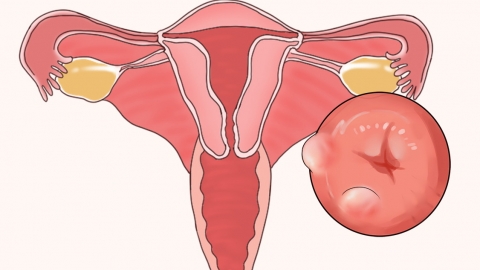What is the best method for treating third-degree cervical erosion?
Generally, third-degree cervical erosion usually refers to the ectopic area of cervical columnar epithelium covering more than two-thirds of the cervix. It may be related to excessive estrogen secretion, over-cleaning, cervical injury, human papillomavirus (HPV) infection, and cervicitis. Depending on the specific situation, general treatment, physical therapy, or medication may be used to treat or alleviate the condition. It is recommended to seek timely medical advice to identify the cause and receive appropriate treatment under a doctor's guidance. Detailed analysis is as follows:

1. Excessive Estrogen Secretion
Women of childbearing age or during pregnancy have elevated estrogen levels, which can stimulate the ectopic displacement of the cervical columnar epithelium, forming cervical columnar epithelial displacement. This is a physiological phenomenon that typically does not require special treatment.
2. Over-Cleaning
Excessive use of vaginal washes or alkaline soaps in daily life may disrupt the vaginal flora balance, allowing harmful bacteria to proliferate and subsequently cause cervical columnar epithelial displacement. It is recommended to stop using irritating washes and maintain the natural vaginal environment.
3. Cervical Injury
Injuries caused by childbirth, curettage, or intrauterine device (IUD) placement may lead to reduced local defense function, triggering inflammatory responses that progress to cervical columnar epithelial displacement, potentially accompanied by symptoms such as bleeding and abnormal vaginal discharge. Patients may follow medical advice to undergo physical treatments such as laser therapy or electrocauterization.
4. Human Papillomavirus (HPV) Infection
HPV infection causes abnormal proliferation and variation of cervical cells, leading to inflammatory responses and histological changes that result in cervical columnar epithelial displacement, potentially accompanied by increased vaginal discharge and odor. Patients may take medications such as minocycline hydrochloride capsules, amoxicillin tablets, or gatifloxacin dispersible tablets under medical guidance.
5. Cervicitis
Unhygienic sexual practices, multiple abortions, and similar factors may lead to cervical inflammation. Prolonged exposure to severe irritation can also cause cervical columnar epithelial displacement, accompanied by symptoms such as itching and burning pain. Patients may use medications such as Kangfu Xiaoyan suppository, Gongyanping tablets, or Gynecological Qianjin tablets as directed by a physician.
During treatment, patients should actively cooperate with the doctor's treatment plan, pay attention to personal hygiene, and adjust dietary habits to promote recovery from the condition.




